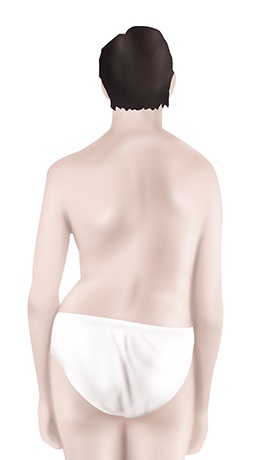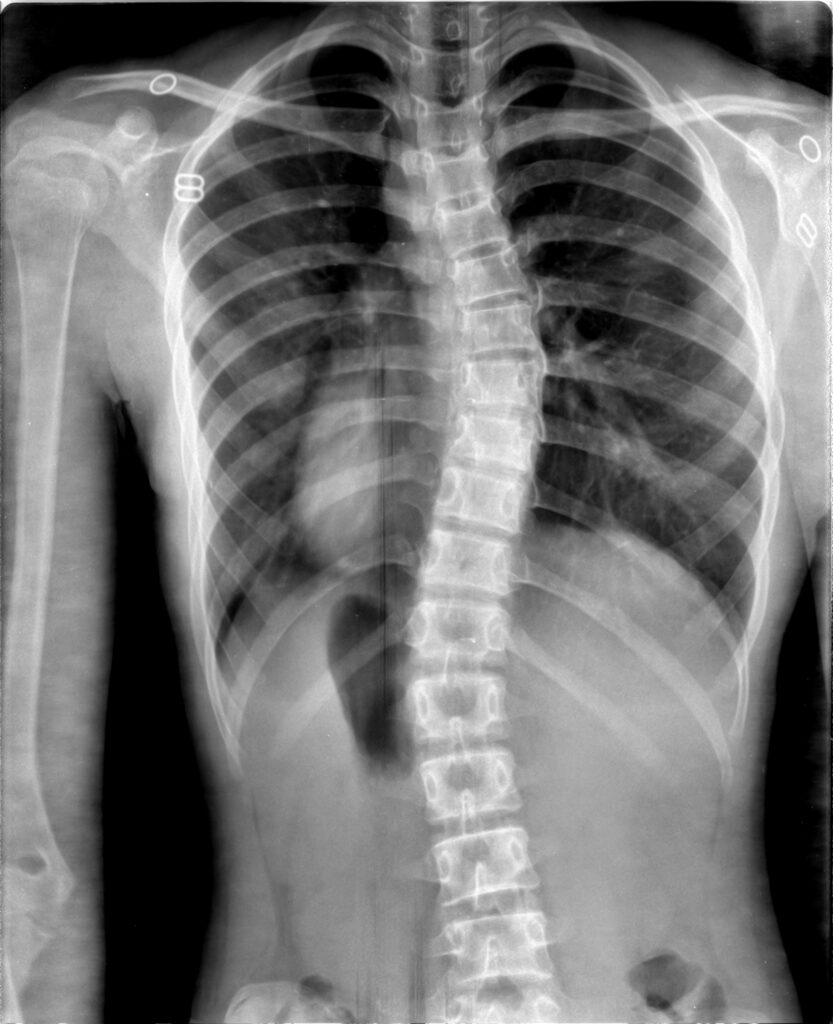Mild Scoliosis
Mild scoliosis, a condition characterized by a slight curvature of the spine, is a common spinal abnormality that affects individuals of all ages. While it may not cause significant physical discomfort or functional limitations, understanding mild scoliosis is important for early detection, proper management, and preventing potential progression.
This page aims to shed light on the definition of mild scoliosis, the key postural indications to look for at home, and the underlying causes that contribute to its development.
Defining Mild Scoliosis
Mild scoliosis is typically classified based on Cobb angle measurements, which determine the extent of the spinal curvature. A Cobb angle between 10 and 25 degrees is generally considered as mild scoliosis. This measurement is obtained through specialized imaging techniques, such as X-rays, which allow healthcare professionals to accurately assess the curvature and its severity.
Postural Indications of Mild Scoliosis
While a proper diagnosis can only be made by a healthcare professional, there are certain postural indications that may suggest the presence of mild scoliosis. These signs can be observed at home and include:
- Uneven shoulder height: One shoulder appearing higher than the other or a shoulder blade protruding more prominently on one side.
- Uneven waistline: Noticeable asymmetry or an apparent shift of the waistline when viewed from the back.
- Head and neck misalignment: The head might appear slightly off-center, not aligning directly above the pelvis.
These postural indications, although not definitive evidence of mild scoliosis, should prompt further evaluation by a healthcare provider to confirm the diagnosis and determine the appropriate course of action.
Uneven shoulders
Uneven waistline
Head/neck offset



Underlying Causes of Mild Scoliosis
The causes of mild scoliosis can vary, and in many cases, the exact underlying cause remains unknown. However, several factors have been identified as potential contributors:
Idiopathic: The most common cause of mild scoliosis is idiopathic, meaning the precise cause is unclear. It often develops during adolescence and is more common in females. Genetics and hereditary factors may play a role in its occurrence.
Muscle imbalances: Muscle imbalances or weakness in the back muscles can lead to an uneven distribution of forces on the spine, potentially resulting in a mild curvature.
Postural habits: Prolonged poor posture, such as slouching or sitting asymmetrically, can put stress on the spinal column over time, leading to mild scoliosis.
Growth spurts: Rapid growth during adolescence can sometimes trigger the development of mild scoliosis, as the spine may grow at different rates or unevenly.
- Hormone imbalances: Several key hormones, such as progesterone, leptin, melatonin, serotonin, and vitamin D have all been associated with idiopathic scoliosis.
- Bone density differences: It has been shown that children with idiopathic scoliosis have a lesser amount of bone density than their peers.
- Neurotransmitter disruptions: These disruptions in neurochemistry can make it difficult for the brain to communicate with postural (spinal) muscles.
- Micronutrient deficiencies: Patients with idiopathic scoliosis often have deficiencies of important nutrients like selenium, manganese, vitamin D3, as well as higher levels of copper.
Key Takeaways
Recognizing mild scoliosis and understanding its underlying causes is crucial for early detection and timely intervention. If you notice any postural indications or suspect the presence of mild scoliosis, it is essential to consult with a healthcare professional for an accurate diagnosis and appropriate treatment recommendations. While mild scoliosis may not always require immediate medical intervention, regular monitoring and proactive management can help prevent potential progression and ensure optimal spinal health and overall well-being.
Dr. Morningstar can create a custom care plan that addresses all components of scoliosis, helping to increase the chance of an excellent clinical outcome. Being proactive, and not just waiting for a mild scoliosis to get worse, is key for getting the best possible result.

